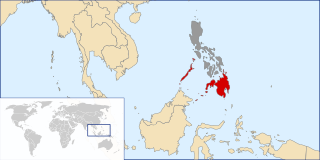 W
WThis article covers the history of the Philippines following the 1986 People Power Revolution known as the Fifth Republic of the Philippines.
 W
WFrom 1986 to 1987, there were six plots to overthrow Philippine President Corazon Aquino involving various members of the Armed Forces of the Philippines. A significant number of the military participants in these attempts belonged to the Reform the Armed Forces Movement (RAM), while others were identified loyalists of former President Ferdinand Marcos, who had been deposed in the People Power Revolution in late February 1986.
 W
WThe Camp Cawa-Cawa siege was a siege of a Philippine Constabulary-Integrated National Police camp by security forces of the Philippines on January 3–5, 1989, after a rogue policeman took the camp's ranking officer hostage.
 W
WThe communist rebellion in the Philippines is an ongoing conflict between the Government of the Philippines (GPH) and the New People's Army (NPA), which is the armed wing of the Marxist-Leninist-Maoist Communist Party of the Philippines (CPP). The conflict is also associated with the National Democratic Front of the Philippines (NDFP), which serves as the political wing of the CPP.
 W
WThe Second EDSA Revolution, also known as EDSA II, was a political protest from January 17–20, 2001 that peacefully overthrew the government of Joseph Estrada, the thirteenth President of the Philippines. Estrada resigned and was succeeded by his Vice President, Gloria Macapagal Arroyo, who was sworn into office by then-Chief Justice Hilario Davide Jr. at around noon on January 20, 2001, several hours before Estrada fled Malacañang Palace. EDSA is an acronym derived from Epifanio de los Santos Avenue, the major thoroughfare connecting five cities in Metro Manila, namely Pasay, Makati, Mandaluyong, Quezon City, and Caloocan, with the revolution's epicenter at the EDSA Shrine church at the northern tip of Ortigas Center, a business district.
 W
WThe May 1 riots, or EDSA III, were protests sparked by the arrest of newly deposed president Joseph Estrada of the Philippines from April 25–May 1, 2001. The protest was held for seven days in a major highway in Metropolitan Manila, the Epifanio de los Santos Avenue (EDSA), which eventually culminated in an attempt to storm Malacañang. Taking place four months after the EDSA Revolution of 2001, the protests were considered as a more populist and representative uprising in comparison to the previous demonstrations in the same location in January 2001. The protests and the attack on the presidential palace, however, failed in their objectives. Participants continue to claim that it was a genuine People Power event, a claim disputed by the participants and supporters of EDSA II. President Gloria Macapagal Arroyo has acknowledged the divisive nature of the two terminologies by saying in one statement that she hoped to be the president of "EDSA II and EDSA III".
 W
WThe Federal Republic of Mindanao is a proposed country encompassing Mindanao, Palawan and Sulu of the Philippines. The independence of the republic was to be proclaimed at a convention in Cagayan de Oro on April 25, 1986 by the Mindanao People's Democratic Movement led by Reuben Canoy but original plans to proclaim the proposed republic's independence were changed to avert arrest by the Corazon Aquino administration due to violation against sedition law. A 31-paged constitution was signed as a move to declare intent to proclaim an independent federal state and the flag of the proposed state was raised. Mindanao, Land of Promise and Security, is the proposed national anthem by the proposed country's proponents.
 W
WThe Moro conflict was an insurgency in the Mindanao region of the Philippines from 1969 to 2019.
 W
WPhilippines v. China, also known as the South China Sea Arbitration, was an arbitration case brought by the Republic of the Philippines against the People's Republic of China under Annex VII to the United Nations Convention on the Law of the Sea (UNCLOS) concerning certain issues in the South China Sea including the legality of China's claimed Nine-dash line.
 W
WThe protests against Rodrigo Duterte, the 16th President of the Philippines, began on November 18, 2016 following the burial of late president and dictator Ferdinand Marcos, whom Duterte supported. These series of protests, mostly simple and peaceful, are mostly conducted by left-wing groups and other opponent figures mainly due to ongoing war on drugs, declaration of martial law in Mindanao, and employment issues such as contractual term being applied by the company and the inflation due to Tax Reform for Acceleration and Inclusion Act. More causes such as the government's response to the COVID-19 pandemic in the country, the passage of Anti-Terrorism Act of 2020, and the shutdown and franchise denial of ABS-CBN.
 W
WThe 2000 Sipadan kidnappings was a hostage crisis in Sabah, Malaysia, and the southern Philippines that began with the seizing of twenty-one hostages from the dive resort island of Sipadan at approximately 6:15 p.m. on 23 April 2000, by up to six Abu Sayyaf (ASG) bandits. Taken hostage were 10 tourists from Europe and the Middle East and 11 Malaysian resort workers, 19 non-Filipino nationals in total. The hostages were taken to an Abu Sayyaf base in Jolo, Sulu.